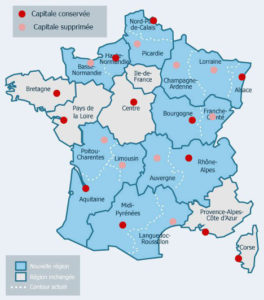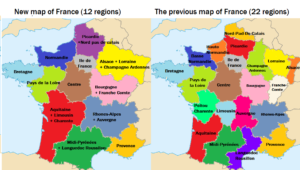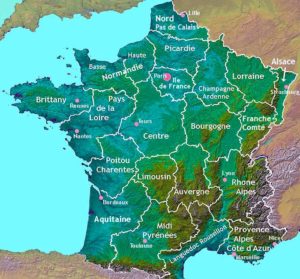


Administrative Regions
For detail see about-france.com
Since 2016, Metropolitan France has been divided administratively into 13 regions; until the end of 2015, there were 22 regions.
The reduction has been obtained by merging certain regions together, as can be seen on the map above. Some of the new super-regions combine the names of the old regions, others like Occitanie or Grand Est are new. Meanwhile the old regions that have been merged are likely to keep their identities, though not their institutions, for some time to come, specially those that like Limousin, Champagne or Alsace, which are historic provinces or areas of France.
There are also five overseas regions.
Regions have extensive powers in the fields of transport, infrastructure, economic development, tourism and education (provision of lycées), and since these powers were devolved to them from 1981 onwards, regions have often worked hard over the years to develop a regional identity.
Many of today’s French regions correspond largely to the provinces of pre-revolutionary France, and share the same name. Others are modern creations including areas from different historic provinces.
France also has a number of well-known “areas” which are not administrative regions. These are historic or geographic areas, or simply areas that have an identity in terms of tourism.
Terrain

Historical / Tourist Regions
